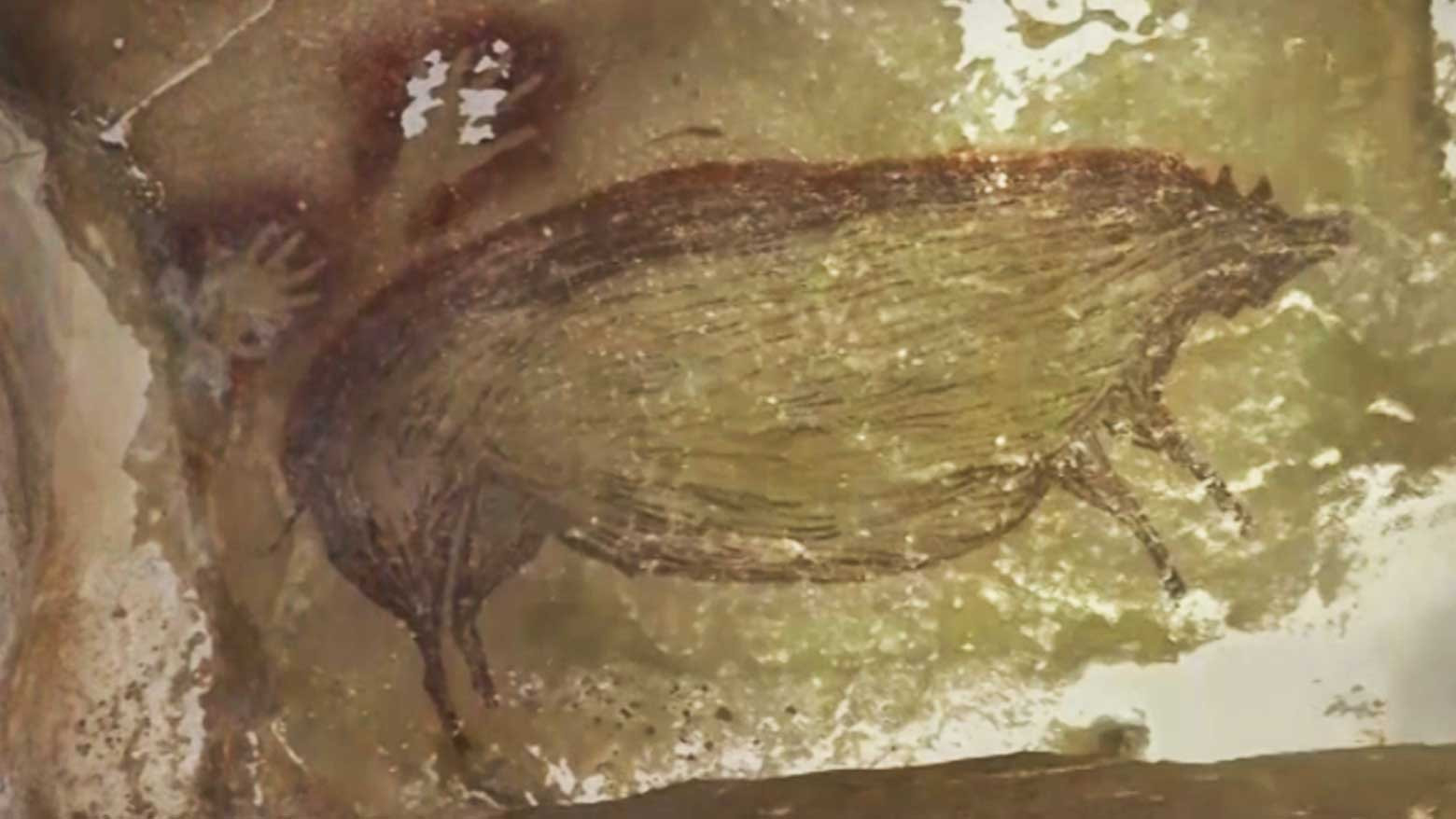Adhi Agus Oktaviana came across the image five years ago. He works for Indonesia's Research and Innovation Agency, and has discovered a number of ancient murals in the country. He agreed to lead an NHK team to the cave "Leang Tedongnge" — a visit that required government permission.
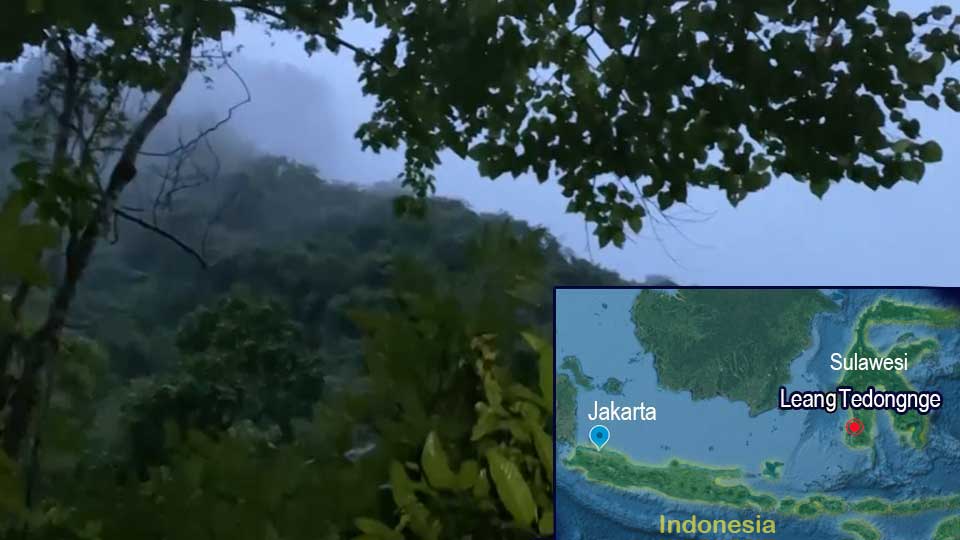
Getting there wasn't easy. We lugged large amounts of outdoor gear through the jungle, sometimes waist-deep in rice paddies, and even across a rickety bridge made of bamboo.
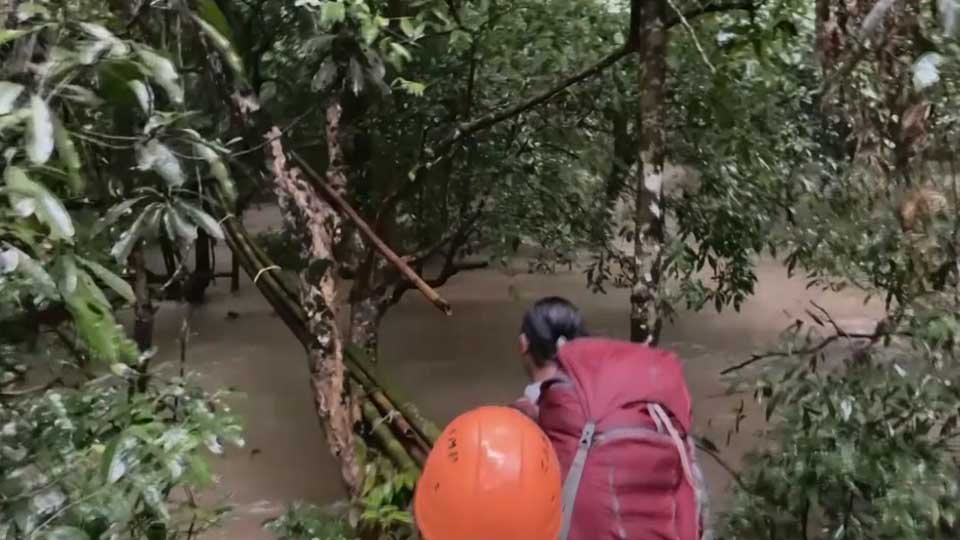
We spend the night at an indigenous village, where we meet a man named Muin. He says the cave is one of many in the mountainous area, and that the locals knew about the mural long before the researchers turned up.
Muin also says that it is known as "the cave of the buffalo (Leang Tedongnge)," because people used to keep their water buffalo there.

Reaching the cave
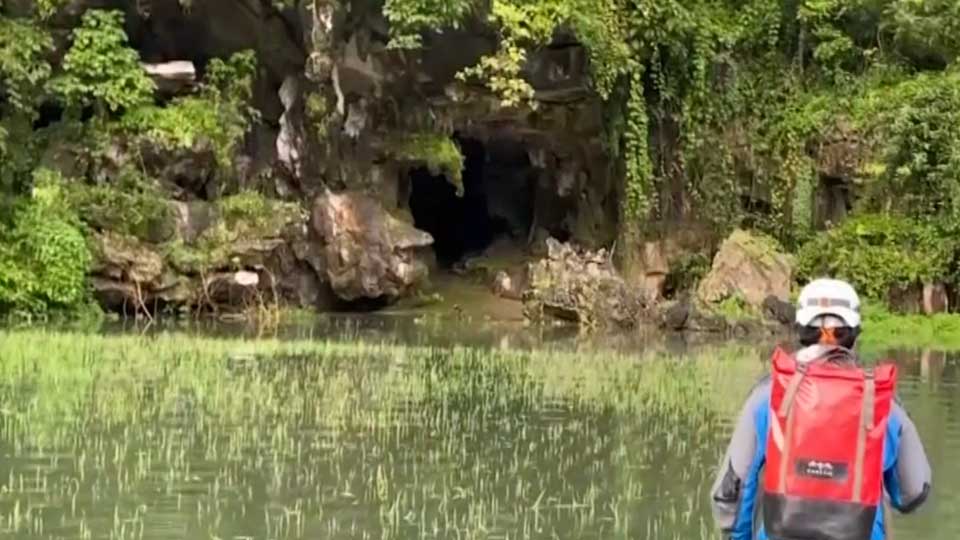
The entrance to the cave lies across another rice field. The opening is about five meters high. As we proceed to an intricated corridor, we come across some large open spaces. The artwork is on one of the back walls of such rooms, about 50 meters in.
It depicts a life-size warty pig, about 130 cm by 70 cm. The artist even included details of the leg muscles and fur. Beside the animal are two human handprints.
Last year, scientists determined that a calcite deposit formed on top of the work was at least 45,500 years old. In doing so, they had also confirmed the pig to be the world's oldest known figurative painting.
Researchers found three more pigs, which are less well-preserved. "There are four, and they appear to be fighting each other," said Adhi.
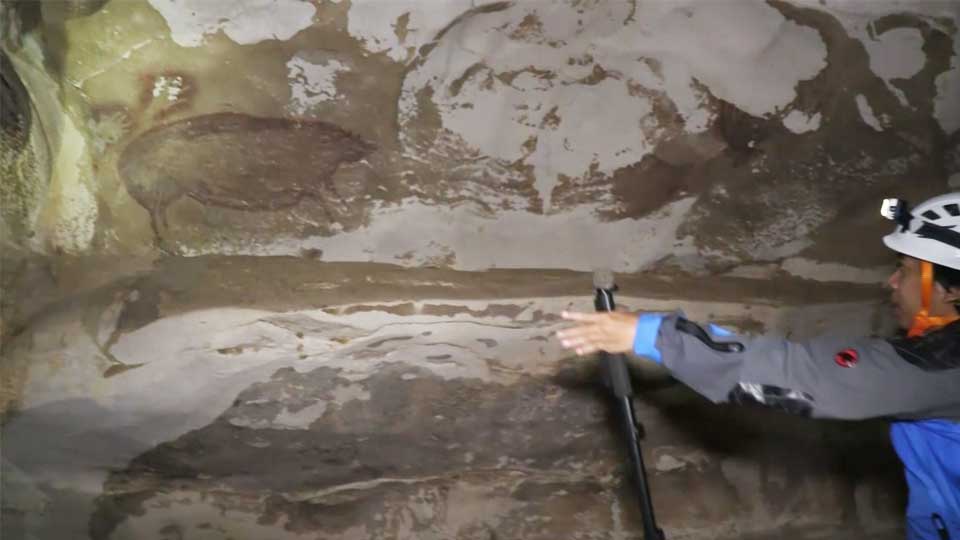
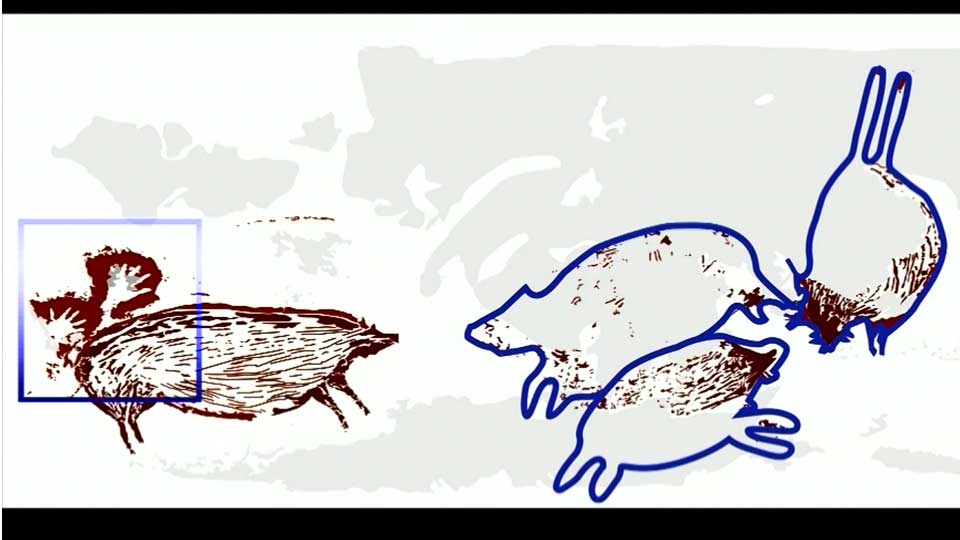
Heritage at risk due to global warming
Indonesian archaeologists continue to study the mural for clues about how humans settled in the region.
But Adhi says global warming is posing a serious threat to the preservation of the works. He showed us a panel nearby which he says is another painting of a wild pig. But it is hardly visible. Adhi says changes in temperature and humidity are causing salt to crystallize and damage the surface.
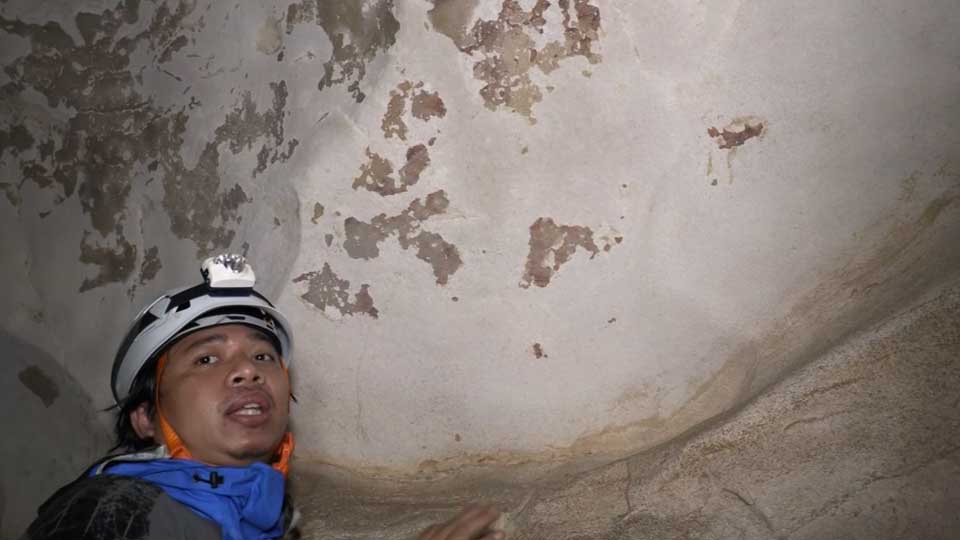
Adhi wants action, before it's too late. "We must pass on this piece of heritage to the next generation."
